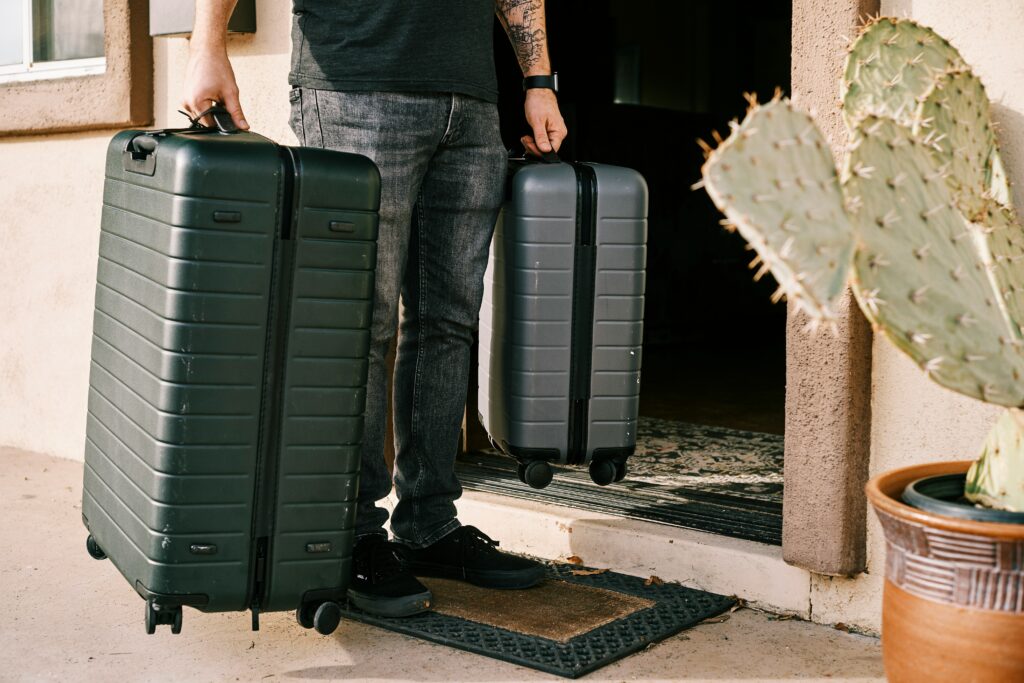
In recent times, many travelers have ventured abroad, only to face the chaos of crowded airports resulting in delayed or misplaced luggage. With ongoing staff shortages in the aviation industry, such scenarios might persist during peak travel seasons.
Though airlines often manage to recover lost luggage eventually, arriving at a new destination without your possessions is undeniably distressing. How can you alleviate some of this stress? By taking matters into your own hands and tracking your luggage.
Self-Tracking Solutions for Your Luggage
Diverse Technologies in Luggage Tracking
Luggage trackers employ various technologies, enabling you to pinpoint the location of your belongings via a map on your smartphone. Whether it soothes your worries to know your luggage’s whereabouts, or aids in locating it amidst airport chaos, here’s how different tracking options function.
Ubiquitous Bluetooth Trackers
Devices like Apple’s AirTag, Life360’s Tile, and Samsung’s Galaxy SmartTag, while commonly used for locating keys and other valuables, are also effective for monitoring your luggage. Each tracker is paired with a specific app – Find My, Tile, and SmartThings – allowing you to track any tagged item.
Bluetooth trackers are typically effective within a range of 400 to 800 feet, ideal for scenarios like waiting at the baggage carousel. If your bag is nearby, such as still on the plane or soon to emerge on the conveyor belt, Bluetooth technology lets you pinpoint its exact location.
These trackers can extend their reach through signal bouncing, providing an approximate location. The Apple AirTag, for example, benefits from its vast network of users.
While it’s reassuring to locate your luggage on a global map, remember that retrieval still rests with the airline, not the traveler.
Read More: The Security Risks of AirTags, Tiles, and SmartTags
GPS Trackers: The Global Alternative
GPS tracking offers a more precise method for monitoring items over long distances, anywhere on Earth. This technology is especially useful for tracking vehicles and pets but is less effective in enclosed, densely packed spaces due to interference from physical barriers.
GPS luggage tags, like those from Dynotag or LugLoc, enable real-time tracking through web portals or apps. Knowing the exact location of your luggage brings comfort, though it may not expedite its return.
Is Personal Luggage Tracking Worthwhile?
Apart from the cost of purchasing a tracker, there are no significant drawbacks to tracking your luggage. This practice poses minimal privacy risks and is not prohibited by airlines.
In certain situations, such as when your luggage has reached an airport, self-tracking can be beneficial, enabling you to retrieve your belongings, potentially even before the airline contacts you. Plus, there’s the undeniable peace of mind and entertainment value offered by these trackers.
Tips to Prevent Luggage Loss
- Opt for Carry-On: Many international airlines allow a carry-on bag within 11 to 26 lb (5 to 12 kg). Packing essentials in a carry-on can be a smart move.
- Personalize Your Bags: Make your luggage stand out with bright colors, unique patterns, or distinctive designs like stickers or colored tape.
- Document Your Luggage: Photograph your luggage from multiple angles before flying. These images can assist airline staff in identifying your bags if they are delayed or lost.
Additional Measures for Luggage Safety
- Secure Your Luggage: Use TSA-approved locks to secure your luggage. This not only prevents theft but also helps if your luggage ends up in the wrong hands.
- Label Your Luggage: Ensure your luggage has clear, updated identification tags with your name, contact number, and address. This can be crucial if your luggage is misplaced.
- Check Airline Policies: Familiarize yourself with your airline’s luggage policies, including weight limits and prohibited items. This knowledge can prevent last-minute surprises at the airport.
Understanding Luggage Tracking Technologies
It’s essential to comprehend how different luggage tracking technologies work to make an informed decision:
- Bluetooth Trackers: These devices establish a connection with your phone via Bluetooth and are ideal for short-range tracking. They rely on the proximity of your phone or other devices within the same network to pinpoint the location.
- GPS Trackers: These use satellites to provide a more accurate global position. They are independent of phone networks but might require a subscription for the tracking service.
Conclusion
Luggage tracking, whether through Bluetooth or GPS technology, provides a security layer and peace of mind for travelers. Understanding and using these tools effectively, along with taking preventive measures, can significantly reduce the stress of lost or delayed luggage, making your travel experience smoother and more enjoyable.
Checkpoint remote access vpn configuration
FAQ: Mastering Luggage Tracking
What if my baggage is delayed?
If notified of delayed baggage, the airline should give you a case number and tracking information. Stay in frequent contact with them for updates.
Can I use an app to track my luggage?
While airlines don't offer such apps, you can use apps linked to personal tracking devices in your luggage.
Is it permissible to put a GPS tracker in my suitcase?
Yes, there are no restrictions on placing GPS trackers in your luggage.
How long does it take to find lost luggage?
Recovery time varies but is usually a few hours to days. A SITA study found that most lost luggage is returned within 48 hours.
Do airlines deliver delayed baggage?
Airlines typically cover the delivery costs of delayed baggage to your hotel or home. Provide them with your current address, especially if you're moving between locations.

